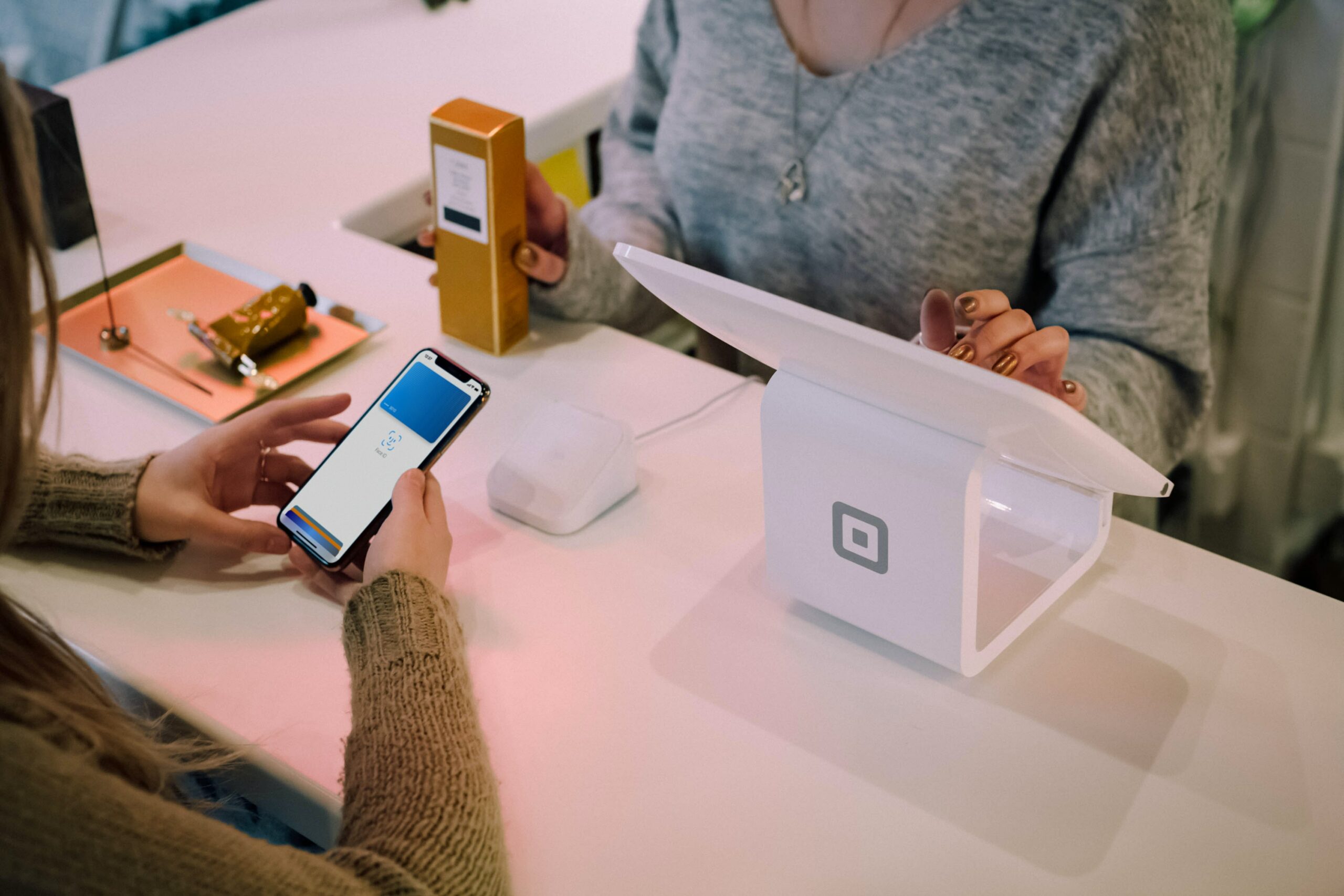All businesses must decide how to price their product. For most companies, the pricing process involves determining your costs and marking them up to make enough profit to keep the lights on. However, is there a difference between pricing for service and pricing for a product?
Unfortunately, the answer is an unsatisfying “it depends.”
Before I take a deeper dive into this answer, perhaps I should first define the difference between a product or service. It might seem obvious on the surface, but once you dig a little deeper, the lines begin to blur. For example, at Beyond Philosophy, a B2B company, we help organizations improve their Customer Experience, which is a service. However, internally, we talk about our “products” related to Customer Experiences, like training and research, so, in that way, we sell a product.
 Introductory marketing classes list the differences between products and services. For example, if what you sell is tangible, then it is a product, and if it is intangible, then it is a service. Another difference is services are consumed at the point of creation and don’t exist beyond that initial moment, while products do. For our part, we will stick with the tangible vs. intangible definition. In other words, if you leave behind a physical item from your organization after the exchange, then you have a product. If you don’t, then you have a service.
Introductory marketing classes list the differences between products and services. For example, if what you sell is tangible, then it is a product, and if it is intangible, then it is a service. Another difference is services are consumed at the point of creation and don’t exist beyond that initial moment, while products do. For our part, we will stick with the tangible vs. intangible definition. In other words, if you leave behind a physical item from your organization after the exchange, then you have a product. If you don’t, then you have a service.
Philosophically, we see a trend in marketing to treat more and more things like they were services, even if they’re products. So, if you’re selling laundry soap, marketers will talk about the experience of using laundry soap and that that makes the product like a service. However, the distinction here is that the laundry soap is tangible, so it is a product.
Comparing Intangibles is Challenging
Another significant difference between products and services is services are more challenging to compare across options. Some services are replicable, but others are not. For example, at our global Customer Experience consultancy, we create custom solutions for our clients. Still, we have a framework of offerings of about six different services we use to create them.
You see something similar in enterprise-level software. Software companies will have a basic package, but the company can then customized it to interface with other software and systems that their customer has.
The difficulty here is that without tangible items, it is difficult for customers to compare pricing and offers between Beyond Philosophy’s proposal and Company X’s. With something like a forklift, you have some similarities to throw in with the differences between offerings, so it is easier to make a price comparison. However, services like what Beyond Philosophy and Company X do for Customer Experience may or may not have similarities to compare. While they are both Customer Experience companies, their proposals might not have the same features. In other words, intangibles make it challenging to compare apples with apples.
The good and the bad of it from the company’s perspective is that there’s the opportunity to make something unique so that it breaks down pricing barriers. So, the good is if your organization is the only one offering a specialized component of the service, then it might put you in a different category. Now, you can charge more.
As an organization, the bad for you is that experts consider pricing the universal equalizer in terms of comparing things. Economists argue the primary purpose that price serves is to allow us to compare dancing lessons with a fruit basket.
Unfortunately, if services are unique and challenging to compare, then customers use price to make decisions. In this situation, the lower price is compelling and outweighs the special offer you have if you are one of the higher-priced bids.
However, being the lowest price isn’t always a boon. Let me give you a real-world example.
When I was still working in corporate, I handled sales management training. We were pricing training for our team from three different providers. One organization came in at $40,000, and the other two were around $300,000.
We used price to do the work for us here, and we inferred quality from it. The low price meant a more inferior quality product to us, in part, because the programs were difficult to compare. It was challenging to take the lowest bid seriously. The low bid made me feel like the company didn’t have enough experience, especially compared to the companies with much higher bids.
How to Kick the Tires That Don’t Exist
Services are difficult to evaluate beforehand because they don’t exist. If you’re buying a forklift, you know, you might not be able to use it extensively, but you can go out and kick the tires. If it’s a service, there are no tires to kick, so you rely on price.
Another implication of this difficulty in comparing services is the critical nature of Reference Points and Anchoring. Reference points allow people to evaluate these things. For example, telling customers you usually charge $50,000, but because of various factors, you are offering it at $42,000 helps them evaluate your offer. Moreover, the $50,000 sets an Anchor from which they can compare.
There are also external clues we use to evaluate the pricing of services. When we are getting a service, we often don’t have those reference prices. So, we draw inferences from the surrounding environment. The environment, the professional appearance of the team, and other things influence how you evaluate those prices, especially for services.
For example, let’s say you need a lawyer to set up a Trust. Having never set one up before, you have no idea how much that would cost. A lawyer tells you $1,500, and you think, “okay…Is that good?” However, you could use external clues to help you determine if it was good. For example, if the quote came from a lawyer working in a modest-looking law firm in a moderately-sized building, you might think it was a reasonable quote. However, if you got the same quote from a law firm in a high-rise downtown with someone handing you an espresso and validating your costly parking, you might think differently.
Many of the price evaluations we make have little to do with the actual prices and instead have a lot to do with the context. For example, my podcast partner and his wife were in Costco, a warehouse store where you can buy in bulk in the States. When they walked by the dairy case, he reached for the milk, but his wife stopped him. She said they could get it cheaper at the local store. He thought she was crazy at the time but later learned she was right; the local store was more reasonable than Costco for milk. He assumed the opposite was true, and because he didn’t have all the information (i.e., the price of milk at the local store), he determined it would be cheaper because they were at Costco; everything is cheaper there. While this example is product-based, it also demonstrates how when you don’t have all the information, you use other cues to help you decide.
There are a couple of other nuances of pricing worth mentioning that are different between products vs. services. Off-pricing or charm-pricing is the idea that a price ending in “$.99” is better than something that ends in “$.00.” The ninety-nine feels like a lower price than the rounded one. However, the round price also communicates quality. In other words, the price of $500 conveys the idea of a higher quality than a price of $499. Therefore, using a rounded-off price instead of an off-price strategy might be better for services if that is the case.
 Finally, there is one more psychological bit to pricing. There’s evidence that people tend to enjoy things more if they pay for it upfront rather than if they pay for it later. It seems counterintuitive because people would want to delay payment as long as they can like we do with credit cards. However, when we prepay, it feels like you can enjoy what you bought and not worry about it. The payment is no longer hanging over your head. In a B2B space, like training, having the attendees pay upfront can help them cross the price issue off their mental books and focus on the experience.
Finally, there is one more psychological bit to pricing. There’s evidence that people tend to enjoy things more if they pay for it upfront rather than if they pay for it later. It seems counterintuitive because people would want to delay payment as long as they can like we do with credit cards. However, when we prepay, it feels like you can enjoy what you bought and not worry about it. The payment is no longer hanging over your head. In a B2B space, like training, having the attendees pay upfront can help them cross the price issue off their mental books and focus on the experience.
I can see that working in some cases, but, personally, if I pay for something up front, I worry that the service that I’m going to get will not be what I expected it to be. So, even though I don’t do it often, I feel like it keeps me from having the leverage to complain. This mentality is the theory behind tipping, meaning we withhold part of the compensation until we see what the service is like. So, yes, paying upfront can mean I will enjoy it more, but it also introduces the risk that you might not appreciate the quality and feel disappointed.
To navigate that trade-off, consider the following. If it is a quality service that people are familiar with, then prepayment might work. But, on the other hand, if it’s a service where people evaluate its quality based on their experience, prepayment might not be the best approach.
So, What Should You Do About Pricing to Increase Your Margin?
Any time we’re dealing with pricing, it’s essential to know your costs because that gives you an internal benchmark. With that information, you can add up the cost of the service and then determine what you need to charge to make a profit.
However, this is only part of your pricing strategy. After that, the only thing that matters for pricing services is what the service is worth to the customer. If they see the value as $300,000, then that is a fair price. If they don’t, then they aren’t going to buy it. Therefore, understanding what your customers value is essential to pricing.
Pricing is a much more complicated issue than it seems upfront. A lot of psychology goes into how we evaluate prices. In areas where comparisons are difficult, people have fewer reference prices. Therefore, they will rely on price and environment to assess the quality and any other reference points that you can give them.
There you have it. No promotions, no gimmicks, just good information.
Think reading is for chumps? Try my podcast, The Intuitive Customer instead. We explore the many reasons why customers do what they do—and what you should do about it. Subscribe today right here.


